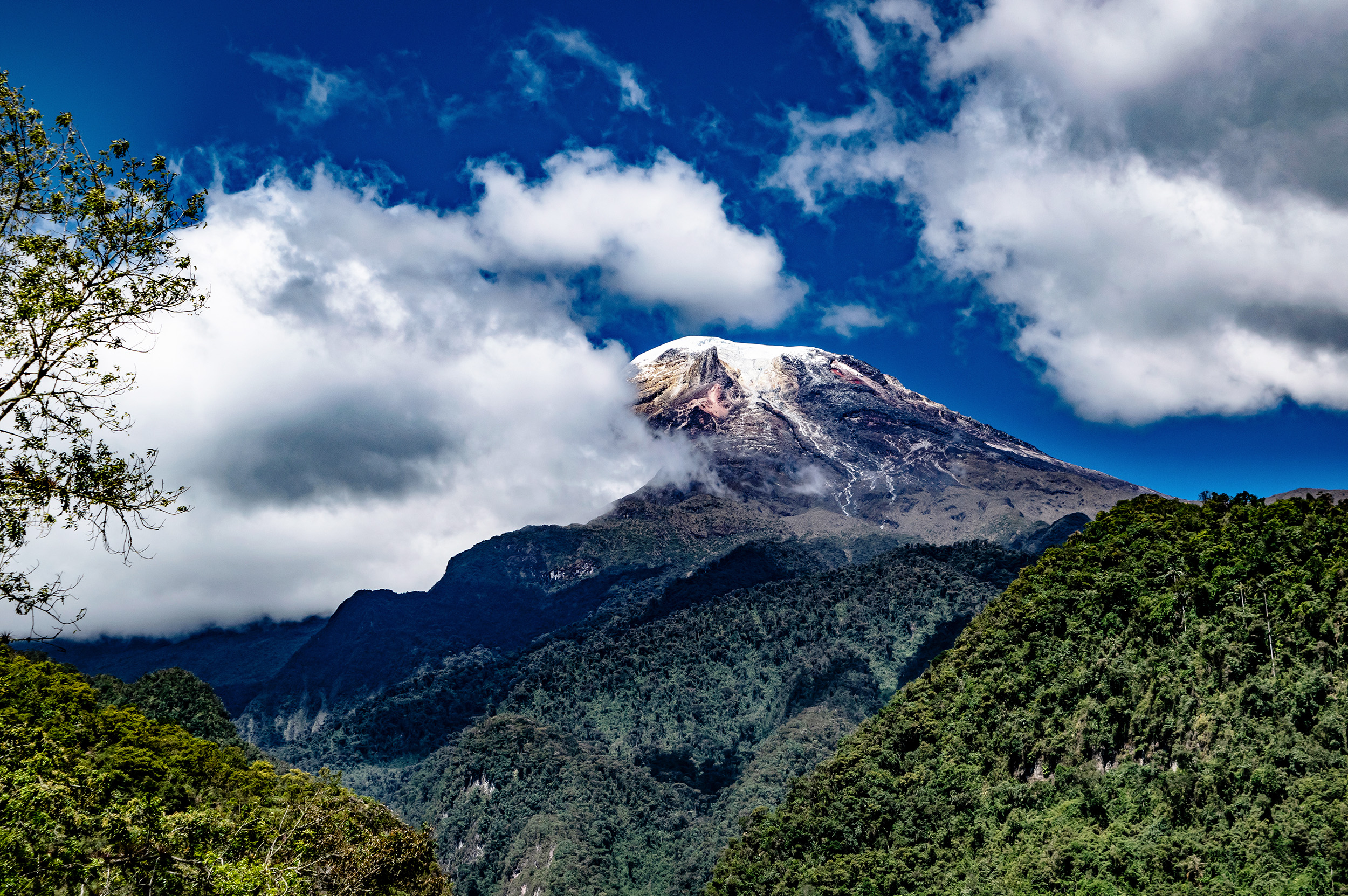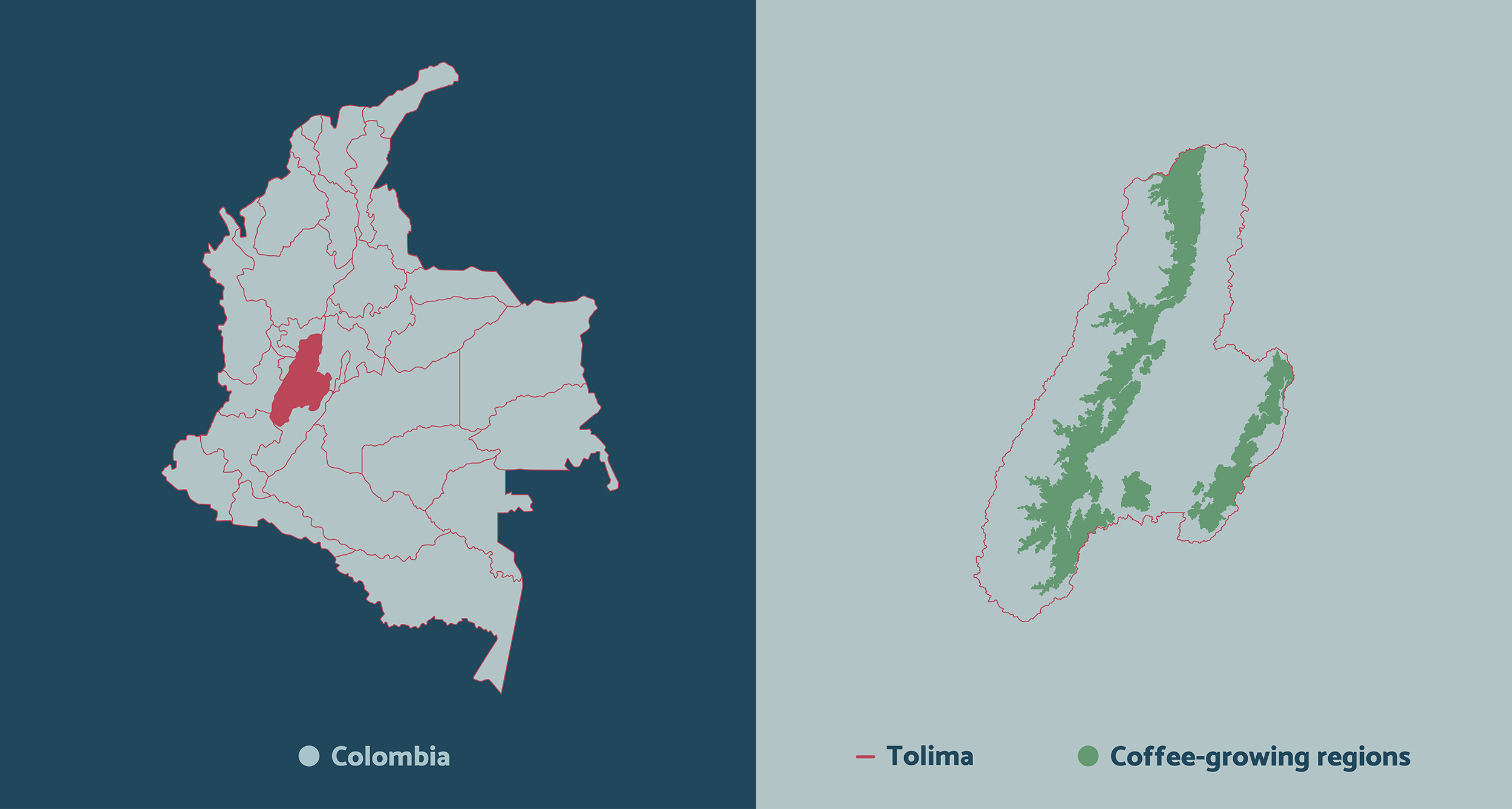Harvest: March–June (main crop), October–December (mitaca)
Elevation: 1,000–2,000 metres (3,300–6,600 feet) above sea level
Rainfall: 1,200–2,200 millimetres (47–87 inches)
Temperature: 16°C–25°C (61°F–77°F)
Tolima, Colombia’s third-largest coffee producer, straddles the country’s two main centres of coffee production. Uniquely among Colombian departments, Tolima is part of the traditional Eje Cafetero in the centre of the country as well as the new heartland of Colombia’s coffee production in the country’s southwest.
The northern part of Tolima, where it borders Caldas, Risaralda, and Quindío, is part of the Eje Cafetero. In the south, Tolima borders Huila and Cauca; the coffee farms in this region have factored in the rapid growth in production in this part of the country in the last few decades.
 The Nevado del Tolima, a volcano last active in 1943, lies in the north of the department.
The Nevado del Tolima, a volcano last active in 1943, lies in the north of the department.
Producers planted Tolima’s first coffee trees in 1870 (Superintendency of Industry and Commerce 2017), and in the following decades production grew rapidly, especially in the north of the department (Bergquist 1978). In more recent years, Tolima’s southern municipalities have emerged as the most important coffee producers for specialty buyers. Planadas, in the far south of Tolima, is the third-largest coffee-producing municipality in the whole of Colombia (Perez Godoy 2022).
Tolima has developed a reputation for high-quality coffee and was granted a Denomination of Origin (DO) in 2017 (Superintendency of Industry and Commerce 2017). According to the DO, the distinguishing characteristics of coffee from Tolima are its fairly high acidity and body and diverse fruity and citrusy flavours.
One study comparing the chemical profile of coffee from different departments in Colombia supports the idea that Tolima’s coffee is notably distinct from others in Colombia. The researchers compared hundreds of samples from Tolima, Huila, Cauca, Nariño, and Norte de Santander and found that the coffees from Tolima were the least similar to any of the others (Villegas Hincapié et al 2015).
